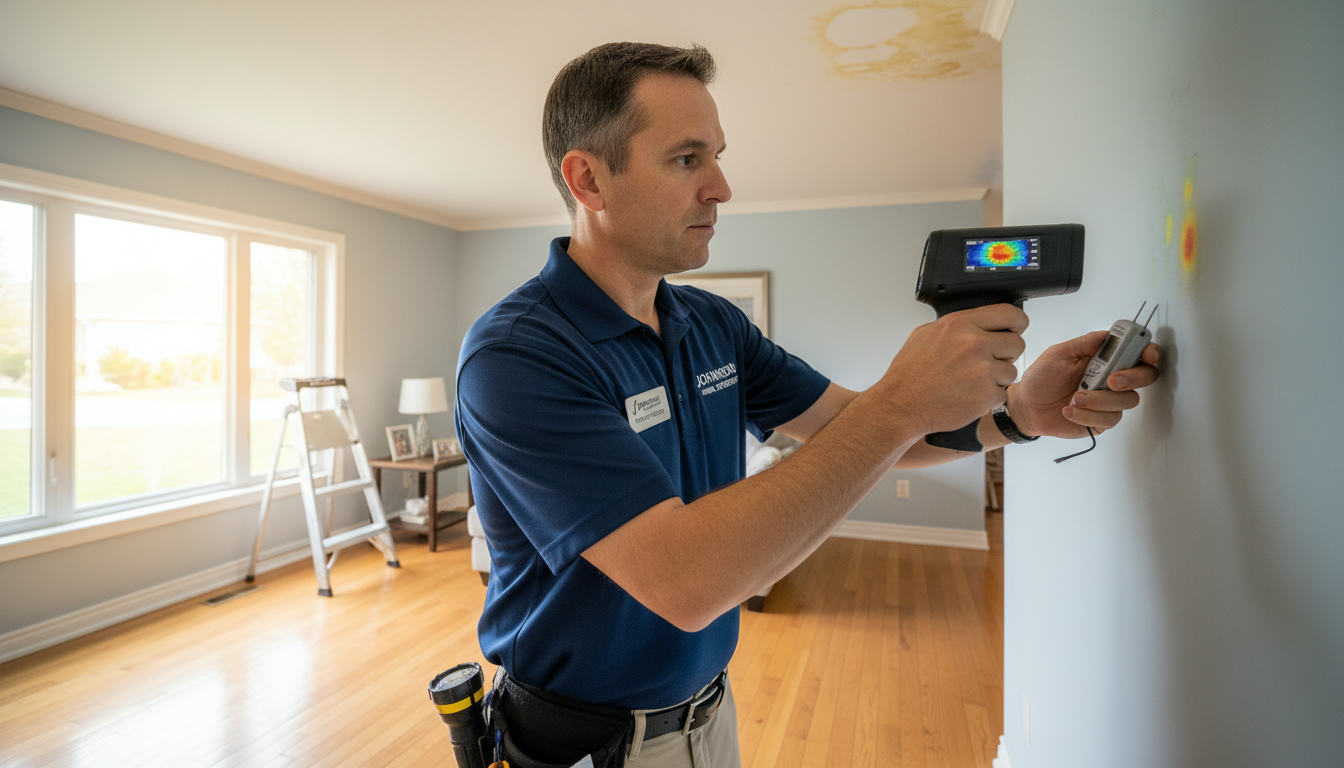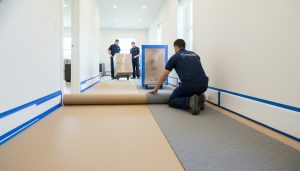How do I check for hidden water damage?
Is hidden water damage silently destroying value in your walls? Learn how to find it before it costs you thousands.
Why this matters now
Hidden water damage kills homes slowly: mold, rot, structural weakening, and collapsed flooring. If you’re buying, selling, or protecting a property, treat “Home Inspection & Condition” like an investment, not an afterthought.
Below are direct, no-fluff steps any homeowner, buyer, or agent can use to find hidden water damage fast.
1) Start with smell and sight
- Musty or dank odors = highest-probability sign of hidden moisture.
- Look for yellow/brown stains on ceilings, walls, and under trim.
- Check wallpaper or paint for bubbling, peeling, or discoloration.

2) Feel the building
- Press drywall and baseboards. Soft or spongy surfaces mean water intrusion.
- Crawlspaces, basements and attic floors are priority touch spots.
3) Use simple tools anyone can buy
- Moisture meter: take readings on walls, floors, and joists. Readings above manufacturer baseline = problem.
- Hygrometer: track humidity in rooms over 24–48 hours. Consistently high RH (>60%) points to hidden leaks or poor ventilation.
4) Detect hidden cold spots with an infrared camera
- IR camera shows temperature anomalies where water is present. It reveals moisture behind walls, under floors, and in ceilings faster than visual inspection.
- Many home inspectors use handheld thermal cameras during Home Inspection & Condition reports.
5) Follow the water’s path
- Start at visible stain and trace upward and backward; water usually travels downhill and along framing.
- Check roof, flashing, chimney, vents, and eaves when ceiling stains appear.
- For floor/ground-level stains, check grading, gutters, downspouts, and sump pumps.

6) Check plumbing and appliances
- Inspect under sinks, around toilets, near dishwashers, water heaters, and washing machines.
- Look for corrosion, mineral deposits, and active drips.
7) Look for mold and structural clues
- Black or green growth in corners, behind trim, or under carpets is a red flag.
- Buckled flooring, rusted fasteners, and rot at sill plates or rim joists indicate long-term issues.
When to call a pro
If a moisture meter, IR camera, or visual checks return suspicious results, escalate. Hire a certified home inspector or licensed plumber to: perform invasive testing, remove drywall for inspection, test for mold, and recommend repairs.
How an expert saves you money
Skip guesswork. A thorough Home Inspection & Condition evaluation prevents surprise repairs and strengthens negotiating power when buying or selling.
Tony Sousa is a local realtor who partners with certified inspectors to deliver clear, actionable inspection reports and repair strategies. If you want a fast, expert assessment or a walkthrough with a moisture meter and thermal scan, contact Tony: tony@sousasells.ca | 416-477-2620 | https://www.sousasells.ca
Take action: don’t let hidden water damage become an expensive emergency. Use the checklist above, get precise readings, and call a pro if anything reads hot.





















